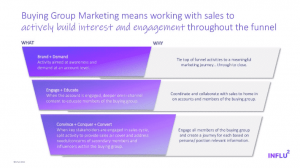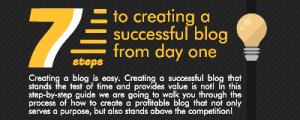
Taking ABM from Theory to Practice Takes Time
I have been reading a lot of articles recently about the popularity and proven results of Account-Based Marketing (ABM). In fact, according to SiriusDecisions’ 2015 State of Account-Based Marketing (ABM) Study, more than 90% consider it a “must-have” tactic. However, few of these articles address the planning and preparation time required to ensure a successful ABM campaign roll-out. If you are considering Account-Based Marketing in 2016 (and you should be), here are six reasons why you should start today and not wait until 2016 to begin.
1. You Need Time to Secure Budget
Even if you have buy-in from Marketing, Sales, and Executive Management on ABM, chances are not enough budget has been set aside and the powers that be are looking for immediate ROI. You need to make sure that you have a sustained investment that covers internal or external headcount, content development, technology, and more.
According to ITSMA’s 2014 Account-Based Marketing Survey, Marketers believe so much in ABM that “On average, among B2B IT services companies, 15% of the marketing budget is spent on ABM. And of the companies who have ABM initiatives, over seven in ten say that they plan to spend more (and nobody is planning to spend less). “ So, it appears that Account-Based Marketing works—but more on that later.
Obviously, in the beginning your ABM budget may be smaller but I have never worked at any organization where my budget was approved on the first management review. Use the time now to build buy-in and set expectations. If you can’t find new dollars, you will have to take dollars from existing programs and may need to move some resources around. All of this takes time.
2. You Need Time to Create a Strategy
Many abandon ABM initiatives before they have time to prove themselves because they are unlike traditional marketing initiatives. If you are serious about Account-Based Marketing in 2016, it is imperative that Marketing and Sales sit down together and develop a strategy framework. (Hint: This probably cannot be achieved in one meeting.)
Overall, Marketing and Sales need to figure out for the targeted accounts “Who do we know and how are they using our products and/or services?” “What are we trying to achieve with these accounts?” “How can we accomplish our goals?””How will we measure success?” “How do we make sure that these accounts want to stay as our larger customers?”
As Megan Heuer, VP and Group Director at SiriusDecisions noted at this year’s Terminus Flip My Funnel conference, “[ABM] is a play that says, ‘I know where growth is going to come from and now I’m going to get the data I need to make smart choices, to work with sales, to deliver the things I need to deliver to get to the outcomes that I can observe and measure.’ That is a strategy, not a tactic. A strategy. You fit your tactics into the strategy.” Develop the strategy framework in 2015 so that you call roll out the campaigns early in 2016.
3. You Need Time to Identify Named Accounts
If this is your first time entering the world of ABM, you need to carefully identify your top accounts. Obviously there are a number of evaluation variables to consider such as relationship with account, sales history with account, sales potential of account, etc. Again, Marketing must work closely with Sales to determine these variables and select the accounts.
One of the most difficult challenges will be to determine the right number of named accounts based on the amount of support that your marketing resources, technology, and content can provide. Most marketing organizations do not have dedicated resources associated with ABM so it is important that you choose your top accounts carefully. You may want to roll out your account lists in phases over a period of time so that your organization can get comfortable with the involved processes and time commitments. No matter how you put the account list together, you can expect to have several meetings between Marketing and Sales before any list is finalized. Allocate the time now.
4. You Need Time to Build Content and Run Campaigns
Part of the effectiveness of Account-Based Marketing is thoroughly knowing your target account and contacts and getting specific, relevant content into their hands at the right time. Now is the time to start fleshing out your ABM campaigns and perhaps performing a content audit to see where you have gaps. Use these next few months to create, edit, or repurpose content to map back to the buyer’s journey and customer experience of your accounts. You have a lot of different options to serve up that content: email campaigns, account-based advertising, account-based retargeting, website personalization, social account nurturing, and more.
Just keep in mind that even if you have your content and campaigns ready to go, ABM takes time to work. If your average sales cycle is seven to nine months, it is probably going to be about the same as you start with Account-Based Marketing. Obviously as you get more comfortable and learn more about your accounts, you may be able to tighten up your campaigns and shorten the sales cycle.
The most important reason to start now on ABM is because it works.You want to make sure that you have done all your preparation and planning now so that you can hit the ground at the beginning of 2016 rolling out your campaigns. Again, if you have a six-month sales cycle, you want to start rolling out your campaigns in January. Going back to that ITSMA survey, “Over 80% of marketers that measure ROI say that ABM initiatives outperform other marketing investments. Half of those marketers say that the difference is significant.” Focus less on programs that are not providing significant ROI and put more time into ABM.
Don’t wait until tomorrow to get started with Account-Based Marketing. Tomorrow will turn into next week. Next week will turn into next month. Next month will turn into next quarter and before you know it, 2016 has passed you by.
Photo credit: USC Viterbi
Business & Finance Articles on Business 2 Community(97)








